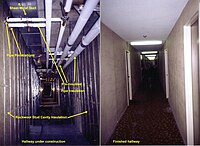
Photo from wikipedia
Abstract A comprehensive understanding of urban thermal environments is vital for improving urban planning and design strategies to mitigate the urban heat island effect as part of sustainable development. This… Click to show full abstract
Abstract A comprehensive understanding of urban thermal environments is vital for improving urban planning and design strategies to mitigate the urban heat island effect as part of sustainable development. This study investigates the fine-scale thermal environment within high density cities using multi-sourced open satellite data. The whole urban area was first classified based on the urban features such as building morphology and land cover, using the local climate zone scheme; then the thermal performance of different local climate zones was assessed using thermal satellite data. Experiments conducted in two high-density Chinese cities indicated that different urban structures have contrasting thermal conditions in the daytime and nighttime. Furthermore, the utility of different satellite data for detecting and monitoring intra-urban thermal environments was assessed. It was found that Landsat and ASTER satellite data have similar performance, and both datasets perform better than MODIS data, which tend to underestimate urban heat islands. The findings of this study can provide a fast and efficient way to understand the thermal environment within high-density cities, which will allow for better planning to improve urban thermal conditions and ensure more sustainable development.
Journal Title: urban climate
Year Published: 2020
Link to full text (if available)
Share on Social Media: Sign Up to like & get
recommendations!